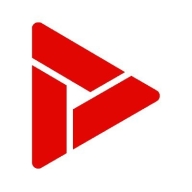


NetApp AFF and Pavilion HyperParallel Flash Array compete in high-performance storage solutions. NetApp AFF appears to have the upper hand in pricing and customer support, while Pavilion HyperParallel Flash Array is superior in features and performance.
Features: NetApp AFF offers advanced data management capabilities, seamless cloud service integration, and a comprehensive feature set. Pavilion HyperParallel Flash Array excels with unmatched speed, scalability, and innovative technology that enhances raw performance.
Room for Improvement: NetApp AFF needs better performance in handling large-scale workloads, more intuitive configuration options, and overall performance optimization. Pavilion HyperParallel Flash Array requires improvements in stability, firmware updates, and operational reliability.
Ease of Deployment and Customer Service: NetApp AFF is noted for its straightforward deployment process and extensive customer support, making it simpler for organizations to get started. Pavilion HyperParallel Flash Array, though powerful, is more complex to deploy but benefits from responsive support.
Pricing and ROI: NetApp AFF offers a favorable pricing structure and quick ROI, making it attractive for budget-conscious organizations. Pavilion HyperParallel Flash Array has a higher setup cost but delivers significant long-term ROI due to its performance benefits.
| Product | Market Share (%) |
|---|---|
| NetApp AFF | 18.5% |
| Pure FlashArray X NVMe | 3.2% |
| Pavilion HyperParallel Flash Array | 0.5% |
| Other | 77.8% |


| Company Size | Count |
|---|---|
| Small Business | 15 |
| Midsize Enterprise | 11 |
| Large Enterprise | 12 |
| Company Size | Count |
|---|---|
| Small Business | 44 |
| Midsize Enterprise | 46 |
| Large Enterprise | 242 |
Pure Storage FlashArray//X is the world’s first enterprise-class, all-NVMe flash storage array. It represents a new class of storage – shared accelerated storage, which is a term coined by Gartner – that delivers major breakthroughs in performance, simplicity, and consolidation.
The NetApp A-Series and C-Series are AFF storage arrays that deliver high performance, scalability, and simplified data management for a wide range of workloads. They are designed for organizations that need to improve the performance and agility of their applications, while also reducing costs and complexity.
NetApp A-Series and C-Series feature a scale-out architecture that can be scaled to meet the needs of your growing business. They also support a wide range of built-in data protection and data security features, including snapshots, replication, disaster recovery, and autonomous ransomware protection.
AFF A-Series all-flash systems deliver industry-leading performance, density, scalability, security, and network connectivity.
AFF C-Series systems are suited for large-capacity deployment as an affordable way to modernize your data center to all flash and also connect to the cloud.
NetApp AFF Benefits
NetApp AFF Features
Reviews from Real Users
NetApp AFF stands out among its competitors for a number of reasons. Two major ones are its high performance and simplicity. PeerSpot users take note of the advantages of these features in their reviews:
PeerSpot user and Storage Administrator, Daniel Rúnar Friðþjófsson, comments “AFF has helped to simplify our infrastructure, while still getting very high performance for our business-critical applications. Having all these things working well on one solution is really good. We run this as the backbone for both Hyper-V and VMware as well as an archive location for Rubrik. So, it is great having one solution that can do it all.
Because of the ease of it all, you have a highly tunable, high-performance storage system that alleviates a lot of problems. With its ease of management, you can quickly get your work done and go onto the next thing on your list.”
Additionally, Mohan Reddy, Sr. Technology Architect at a Pharma/Biotech company comments on how “NetApp's ONTAP data management software has also made tasks simpler for us. There's no question about that. It has helped us run operations very quickly, saving us a lot of time. Before ONTAP, we used to spend a long time doing regular operations, but with the latest version of the tool, our day-to-day operations are much quicker and easier.”
Pavilion HyperParallel Data Platform
The Pavilion HyperParallel Data Platform™ dramatically accelerates what organizations achieve by delivering universally unmatched storage performance, in an incredibly compact solution while reducing data center costs and complexity. Unrivaled flexibility for multiple data types and protocols, along with broad ecosystem integration, ensure that every customer has choice and control.
What is the Pavilion HyperParallel Data Platform
The Pavilion HyperParallel Data Platform is comprised of the Pavilion HyperParallel Flash Array™ and Pavilion HyperOS™. The Pavilion HyperParallel Flash Array leverages a unique, switch-based architecture to create a multi-controller solution that delivers an unmatched combination of high performance, ultra-low latency, and storage density. Pavilion HyperOS is a powerful, purpose-built storage operating system designed to unlock the power of the multi-controller Pavilion HyperParallel Flash Array, which delivers scalability and flexibility that no other solution can offer.
Pavilion HyperParallel Data Platform Data Sheet
Download the Pavilion HyperParallel Data Platform data sheet. Updated: December 2020
We monitor all NVMe All-Flash Storage Arrays reviews to prevent fraudulent reviews and keep review quality high. We do not post reviews by company employees or direct competitors. We validate each review for authenticity via cross-reference with LinkedIn, and personal follow-up with the reviewer when necessary.